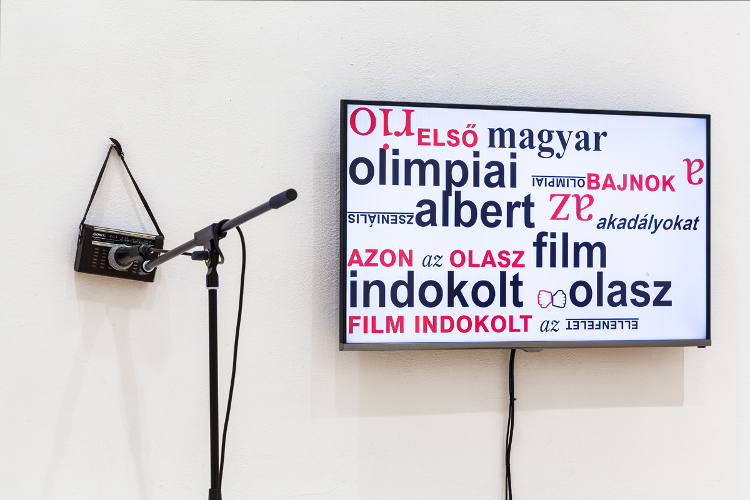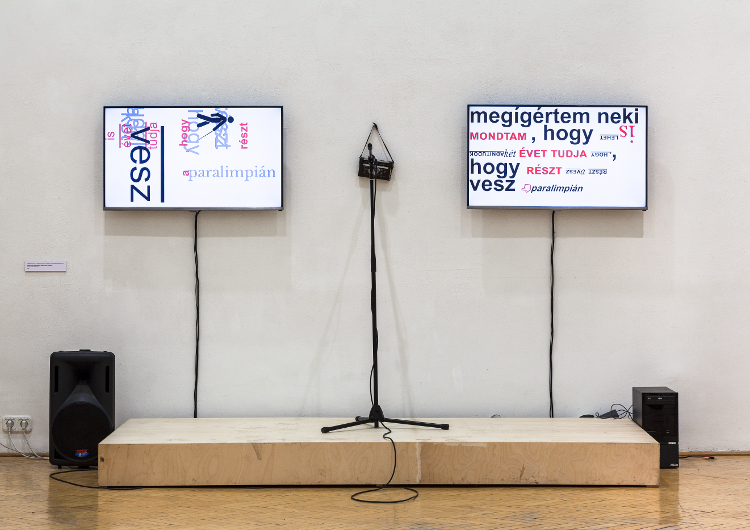|
Instant Phono-Visual Poetrizator (Pseudo-Chaotic Dadamaton) concept: Zoltán SZEGEDY-MASZÁK, András KAPPANYOS development and realisation: Márton FERNEZELYI, Imre LEPSÉNYI, Zoltán SZEGEDY-MASZÁK |
|
This work reinterprets the tradition of Dadaist image poetry and “free” typography in an interactive form. It is inspired by the way such Dadaist works (usually ephemeral in nature, intended for leaflets or newspapers) attempted to illustrate or “transcribe” the emotional dynamics of oral presentation, using methods developed by the Futurist tradition of parole liberta. |

|
|
Instant Phono-Visual Poetrizator is based on digital speech recognition: it identifies words or speech fragments uttered nearby, and turns them into typographic signs. Depending on the way the identified word sounds, an algorithm pairs it up with a matching typographic pattern and displays it on the screen. The words are deposed on top of each other, forming a dynamic image poem (a visual verse, a poetry film) that is constantly changing in time, yet in each moment, it is offering itself for visual and verbal perception simultaneously. Perception is further enriched and contextualized by the acoustic memory of the original utterance and the comical tension resulting from imperfect speech recognition. |
|
Instant Phono-Visual Poetrizator Algorithm One |
|
Instant Phono-Visual Poetrizator Algorithm Two |
|
The conceptual roots of Dada go back to the experience of WWI, especially to the propaganda that robbed words (and with them, the moral principles of human culture) of their meaning. Hugo Ball’s sound-poems point out the inflation of expression by introducing new, previously nonexistent words, a new, “pure” form of verbal currency. We refer to this heroic gesture in our choice of Kossuth Rádio’s (the primary government-controlled news channel of Hungary in 2016) live broadcast as the Phono-Visual Poetrizator’s default input. |

|